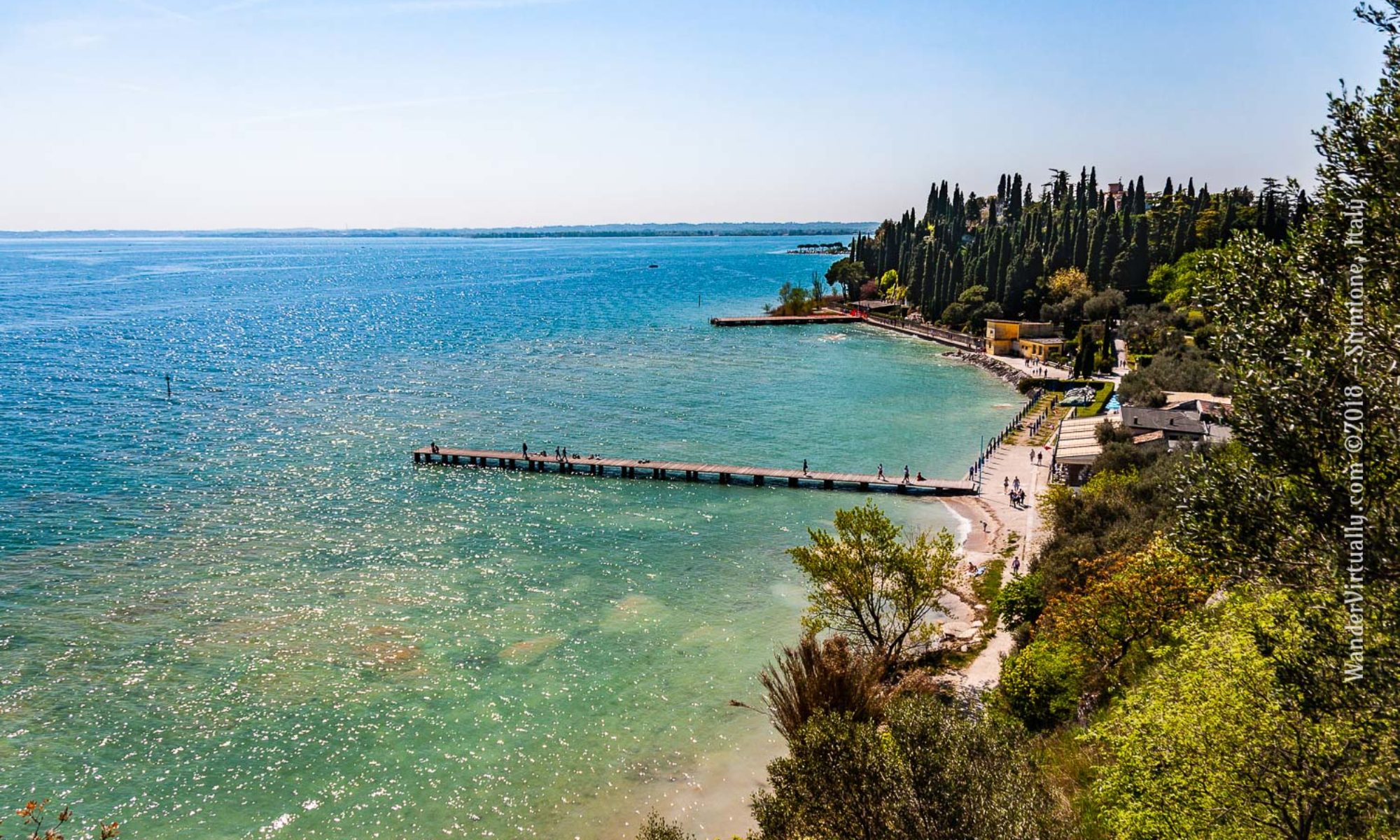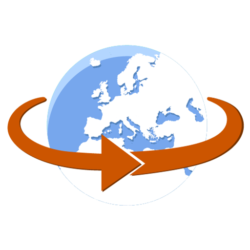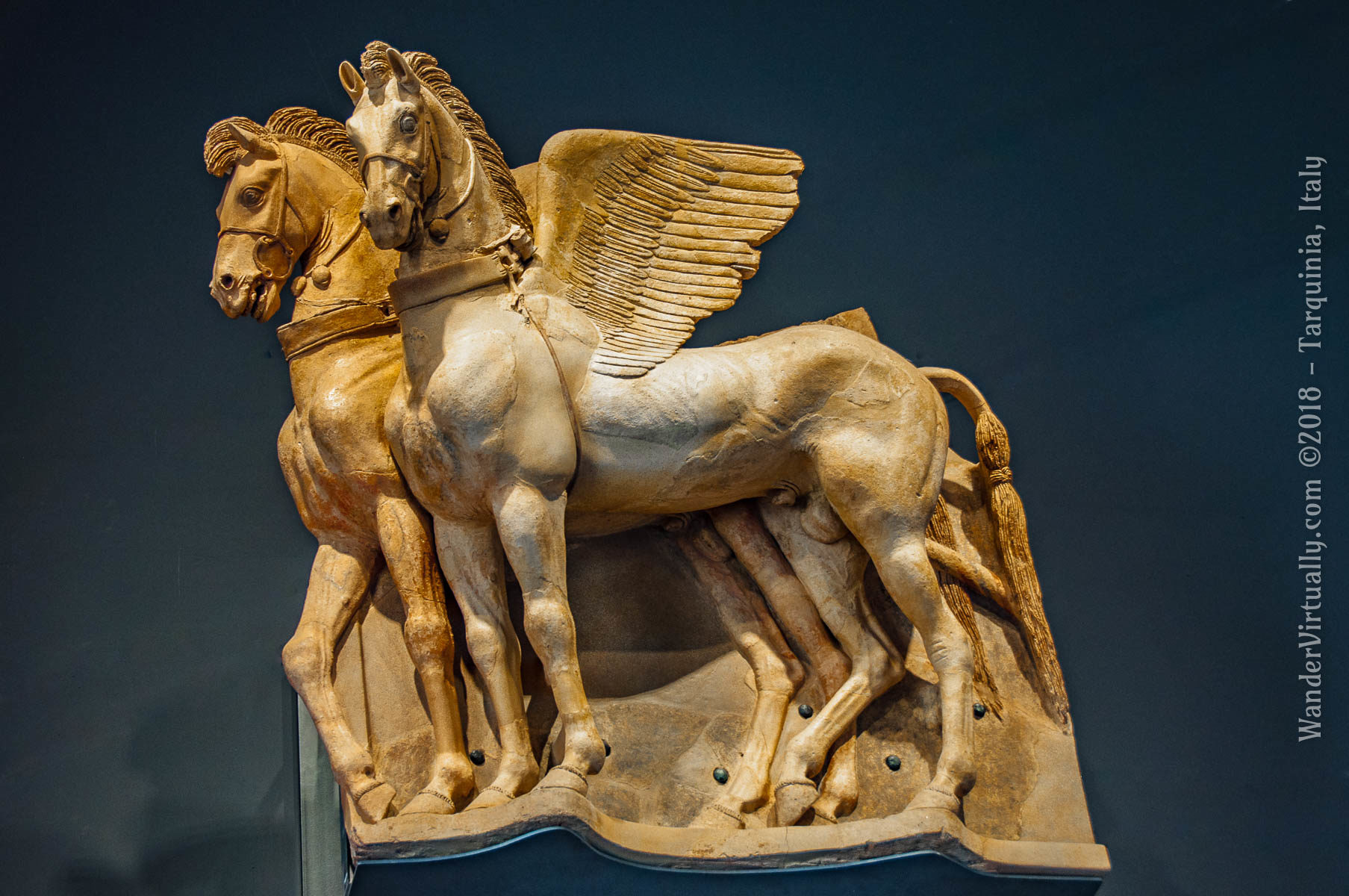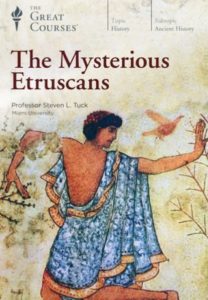Long before there were Romans in Italy, an ancient people, the Etruscans, wielded power across the land. This civilization was already well advanced and trading with Greeks and Phoenicians in the 8th century BCE when Romulus and Remus were just striplings playing bandit games, and Rome was nothing more than a collection of shepherd shacks.
Featured photo: The terracotta Winged Horses of Tarquinia (4th century BCE) were found at the site of the Ara della Regina (Queen’s Altar) in the Etruscan Acropolis of Tarchna. Tarquinia, Italy.
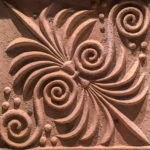
Italy’s Mysterious Etruscans
Due to an abundance of natural resources, Etruscans actively traded in metals, timber, oil, wine, and other food products. Trading with Greeks, Phoenicians, and other Italic tribes accelerated their acquisition of wealth, knowledge and literacy, and luxurious foreign goods. At the height of their power and affluence between the 8th and 6th century BCE, Etruscans held dominion over what is today Tuscany, Lazio, Campagnia, Emiglia-Romagna’s Po Valley, and western Umbria.
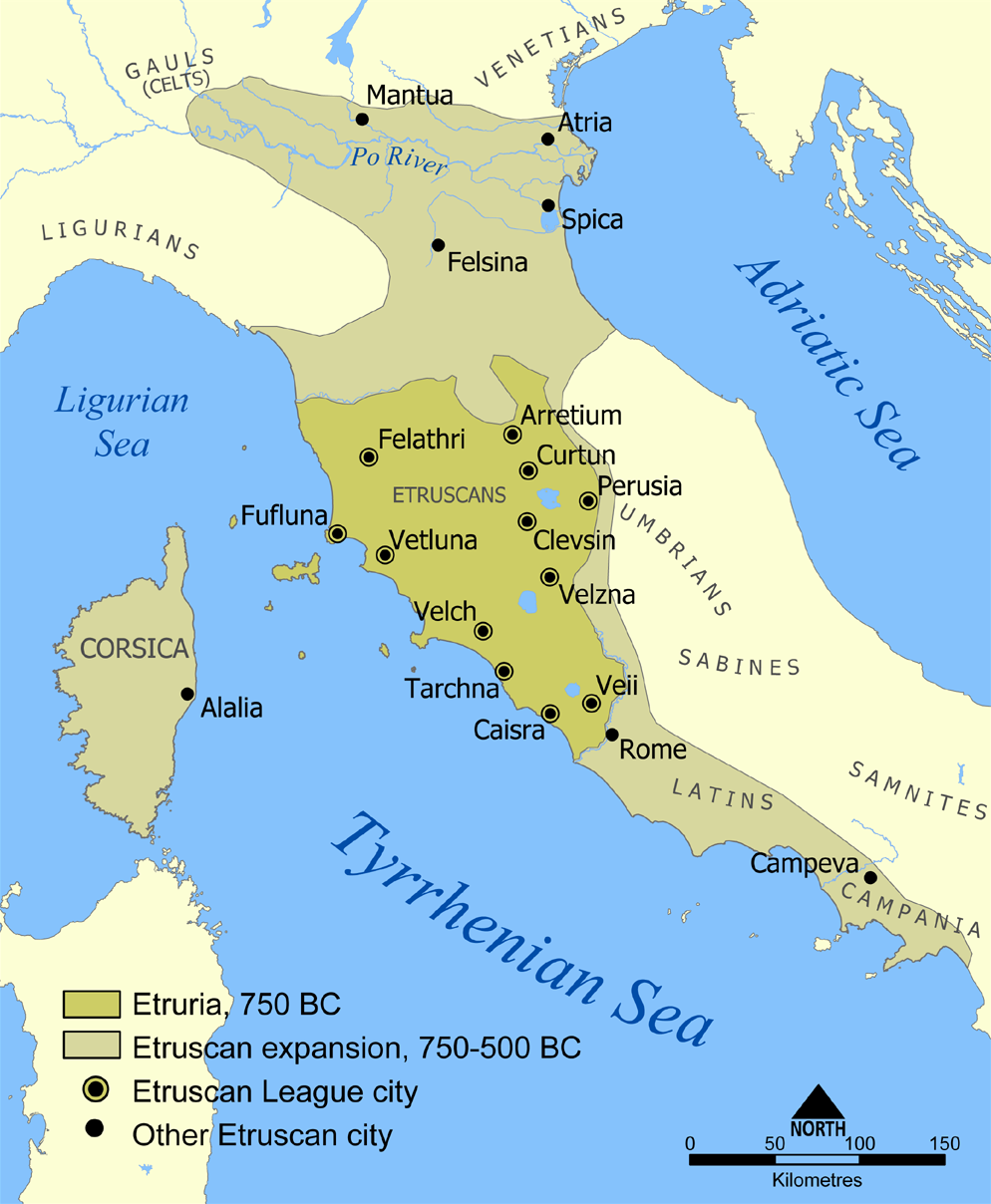
BUT – when today’s tourist visits Italy, typically the itinerary focuses on the architecture of Rome, the arts in Florence, and the romance of Venice’s canals. You’d be hard-pressed to find any recommendation to visit Etruscan sites. And most tourists don’t know who or what the Etruscans are. Che peccato! as the Italians would say. So, I will devote a few posts to this under-appreciated but sophisticated culture that greatly influenced Roman civilization.
Etruscan Who?
Etruscans were known by many names. They called themselves Rasna or Rasenna. The Romans called them Tusci, while the Greeks called them Tyrsenians or Tyrrhenians. Their ancient lands in west central Italy was called Etruria. Today we know that land along the Tyrrhenian Sea as Tuscany and its inhabitants, Tuscans (from Tusci). Whether ancient Etruscans are the ancestors of today’s modern Tuscans, we’ll know more about this intriguing question later.

Many describe Etruscans as mysterious because we don’t have adequate literary material from these ancient people. Historians count only about 13,000 writings in archeological artifacts from their civilization. Most of these writings are from the durable inscriptions on tombstones, or metal artifacts. Etruscans apparently wrote on highly perishable material such as leather, wood or fabric – and these, we have lost to the ravages of history. The longest Etruscan writing we have today is a 1,200-word text found on scraps of a linen book (the Liber Linteus) that was used to wrap an Egyptian mummy!
That’s the first problem. The second problem is that, researchers have not yet fully deciphered most of what the written words mean.
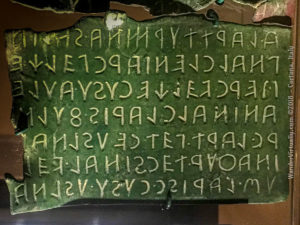
Etruscans helped Romans with literacy by introducing to them their Greek-derived alphabet and system of writing. However, the Etruscan language differed from all the other tribal languages spoken in Italy during antiquity, including Rome’s Latin. We can read the Etruscan writings today, but we don’t know what they all mean!
My Own Etruscan Journey
To learn more about Etruscans, I first listened to professor Dr. Steven L. Tuck’s sometimes entertaining, but definitely eye-opening Great Courses lecture, The Mysterious Etruscans.
This highly sophisticated culture so peaked my curiosity, that I consulted a few more resources including the late Etruscologist Massimo Pallottino’s seminal but migraine-inducing book on the subject, countless pages on Wikipedia, ancient writings, and the works of modern archeologists and researchers.
My conclusion: It looks like the world’s finest Etruscologists are still hard at work trying to definitively piece together the who, what, where, when, how, and why of this ancient civilization.
Finally, last spring I decided to visit several Italian towns to see Italy’s Etruscan patrimony for myself. I went armed with my own itinerary – which I’ll share with you in other posts. But first, find out about these 5 absolutely fascinating facts about Etruscans in my next posts:
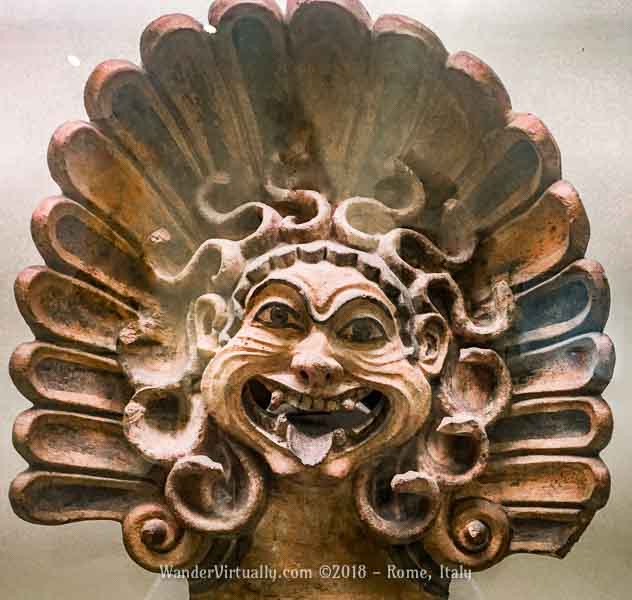
- The Etruscans’ origin story is a problem for the ages, literally.
- Etruscans gave Romans more than they got credit for.
- Etruscan women did things that shocked the ancients.
- There were more Attic vases in Etruria than in Greek cities.
- Being experts in divination, Etruscans predicted their own cultural demise.

Related Posts
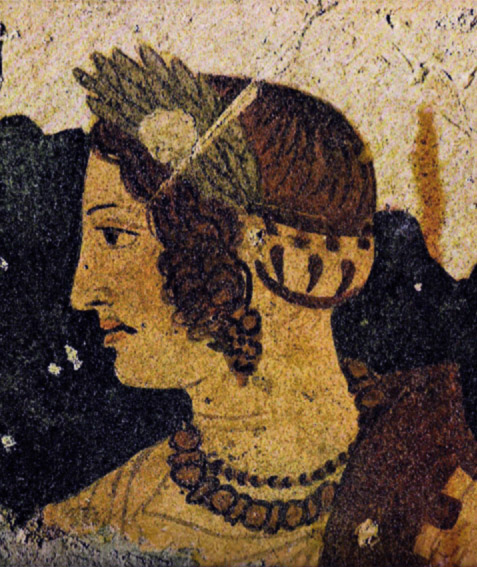
What are the popular theories about the origins of the mysterious Etruscans? Find out from my previous post here …
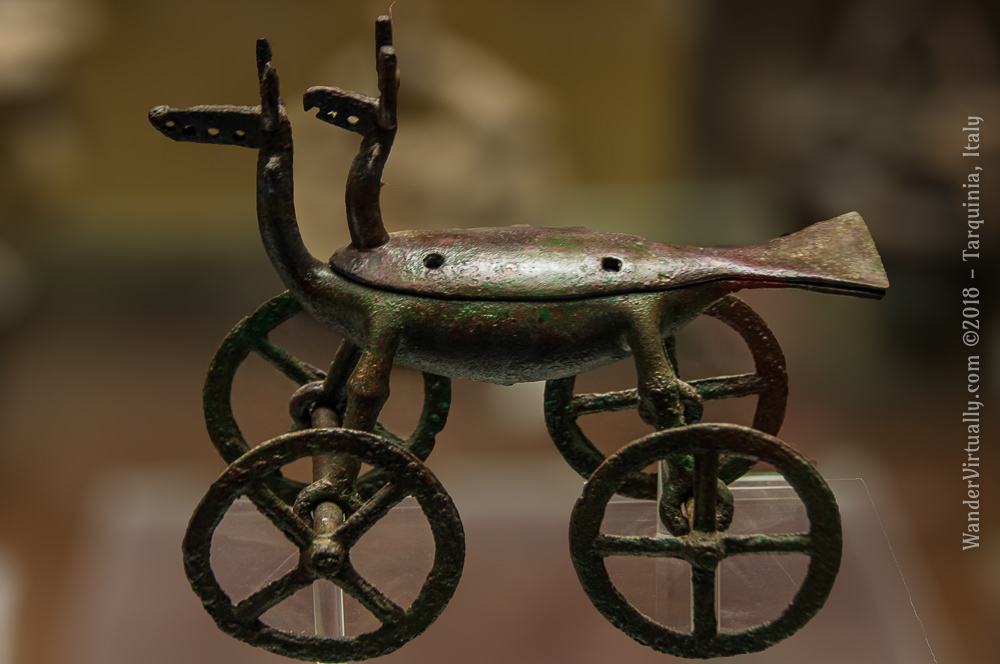
The origin of Italy’s Etruscans mystified historians for centuries. Find out how new evidence may put it to rest: Did Etruscans descend from Villanovans?
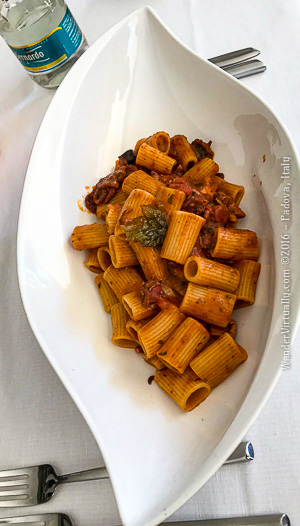
Sampling Italian cuisine should be part of your Italian travel experience. But, are you ready for the Italian menu challenge? Get help from my post on Lunch & Dinner: Navigating the Italian Restaurant Menu.
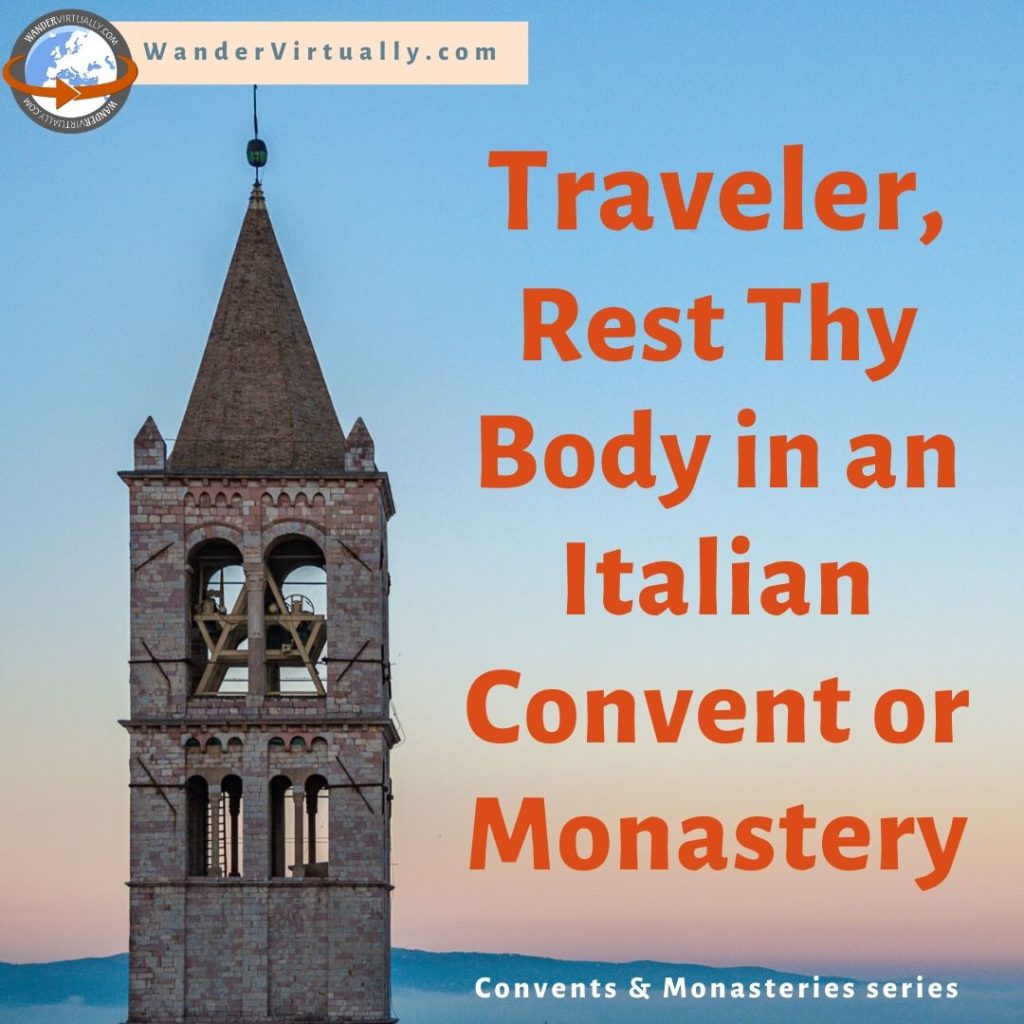
You don’t have to be Christian or religious to stay at an Italian convent or monastery. Find out if these safe, economical, and peaceful lodgings are right for you.
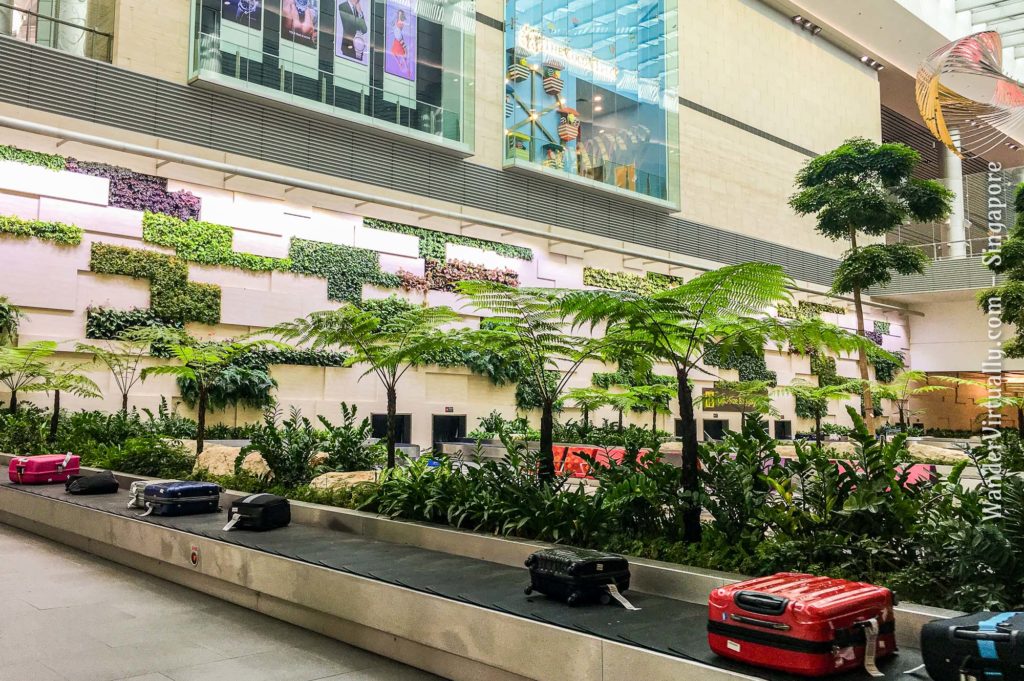
I use simple, inexpensive, but useful tools for travel. Find out what I pack for my trips.
Visit the Italy page for more stories and travel tips …
BELLA ITALIA
Fascinating ancient stories.
Practical travel tales and tips.
